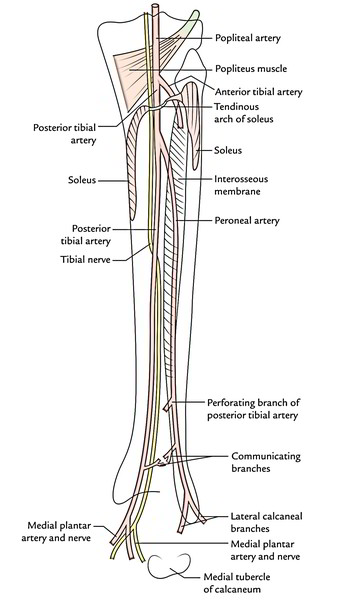Peroneal Artery is the artery that provides blood to the lateral compartment of the leg.
Origin
It’s the biggest and most important branch of the posterior tibial artery. It gives oxygenated blood supply to the posterior and lateral compartments of the leg.
Course and Relationships
- The point of origin is 2.5 cm below the lower border of popliteus.
- It goes obliquely toward the fibula and afterwards descends along the medial crest of the fibula in a fibrous canal between tibialis posterior and flexor hallucis longus. Then enters behind the inferior tibiofibular and ankle joints, and finishes on the lateral surface of calcaneus and ends by supplying the lateral calcaneal arteries.
The size of peroneal artery is often raised. It might join to augment or replace the posterior tibial artery in the lower part of the leg.
Branches
- Muscular branches to the posterior and lateral compartments of the leg.
- Nutrient artery to the fibula.
- Communication branch: It joins with quite similar branch of the posterior tibial artery about 5 cm above the ankle.
- Perforating branch: It’s large and pierces interosseous membrane about 5 cm above the ankle, appears in theanterior compartment of the leg, and ends by anastomosing with the lateral malleolar branches of the anterior tibial and dorsalis pedis arteries.
- Lateral calcaneal artery: It’s a terminal branch which takes part in the formation of lateral malleolar plexus.
Clinical Significance
Dorsalis pedis artery pulse: It’s felt just lateral to the tendon of extensor hallucis longus against the tarsal bones. The clinicians while taking the pulse of the dorsalis pedis artery must bear in mind the perforating branch of the peroneal artery may augment or even replace the dorsalis pedis artery.
x


 (53 votes, average: 4.56 out of 5)
(53 votes, average: 4.56 out of 5)